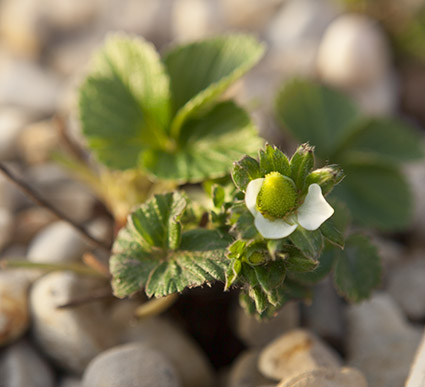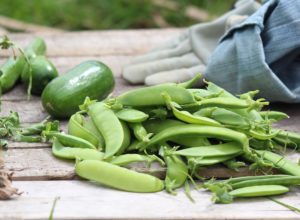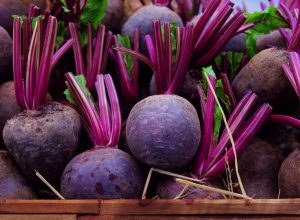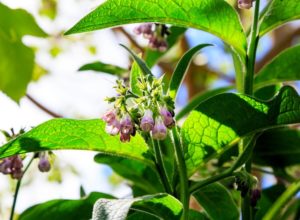March Garden Guide
Cool Temperate Climate
What To Plant in March?
Cooling weather (perhaps . . . if you had a decent summer), shorter days, the Autumn equinox: March is something of a transition month in the productive garden. Many summer vegies are starting to look pretty tatty, even though still churning out their bounty.
Its still a good time to plant brassicas, as seedlings. Give the soil (and plants) a good feed of compost or organic fertiliser at planting, and then some foliar feeding of worm or comfrey tea while we still have some warmth in the soil and air.
Its also still a good time for vegies that need a long growing season, or that can manage winter, like leeks, parsnips, celery, Florence fennel, carrots, beetroot, turnips, silverbeet.
A truly Autumn / Winter group of vegies to consider planting, later in March, are broad beans and peas, and English spinach. Plant seed rather than seedlings, as you’ll have access to a greater range of varieties, and will get stronger plants. English spinach often bolts to seed when stressed, so definitely don’t buy seedling punnets of this one. It loves lime too, so sprinkle some lime and rake in a week or two before planting if you’ve had trouble with this one in the past.
I always scatter coriander seed around when I plant peas. There is often a gone-to-seed coriander plant lurking somewhere in the garden, so you can simply pick the dried seed from the old plant, and scatter it next to your peas, for a happy and productive relationship to flourish.
Maintenance
• Clean up mildewy or dried up leaves, and as you pull out finished summer vegies and weeds, chop them up and make compost. Make a nice big heap, and water it well as you build it, for best results.
• Try to keep on top of the weeds and grass around the place so that they don’t set new seed. If you haven’t time for a thorough weeding session, at least break or cut off any developing flower or seed stems, and throw them to your chooks to eat any seeds, or into a bucket of water to become sludge before they’re used in compost.
Weeds, Pests, and Disease
• Young brassicas are still vulnerable to the cabbage white butterfly. Take direct action (squishing the grubs) or spraying with a biological control agent like Dipel, or protect your seedlings with a barrier such as growcover or fine netting, which keeps the adult insects away from the plants.
• Citrus trees can be affected by scale – if you see sooty mould and ant activity on the tree you probably have it. Treatment is to suffocate the scale insect with white oil or a home made alternative. You need to target the pest on the underside of leaves and small branches, and spray thoroughly a few times over a week or two. DON’T spray white oil when the temperature is above about 25 degrees.
Harvest and Preserve
• Potatoes can be harvested as needed, by ‘bandicooting’ if the vine is still growing, or by digging the whole buried treasure if the vine has died back. Any little escapee potatoes, even a centimetre across, will grow into a new vine eventually. So if you want to grow something else in your ex-potato patch, be thorough with your harvesting. To store potatoes, DON’T wash them. Brush off any really cloddy bits of soil, and spread out in a dark room on some newspaper for a few days to dry / cure the skin. Then keep them in paper bags or a box that can breathe in a dark cool place.
• If you’re still overwhelmed with preserving, consider making fruit syrups or jellies. Its easy – cook up the fruit with a bit of water until all is soft. Drain through a colander lined with muslin (or clean Chux cloth), then mix the strained liquid with sugar to taste (usually about 1 sugar to 3 fruit syrup by volume). Bring to the boil, stirring till sugar is dissolved. Bottle straight away for syrup, or cook a bit more until ‘setting point’ is reached for jellies. Sometimes the pulp left over after draining can be put through a food mill, then some sugar added, and be cooked up to make fruit paste. Two outputs for the price of one!
• Harvest beans that you’ve grown for seed (e.g. borlottis) when the pods are dry and papery on the bush. Any beans can be used this way, so even your green French beans, butter beans or purple kings that got a bit big and tough for fresh eating can be left on the vine to dry, and yield seeds to be stored and used in winter soups.
Featured Permaculture Principle: Obtain a Yield
(Read more about this principle here.)
• If you’ve had summer brassicas, you may have some gone-to-seed broccoli or kale or radish plants around the place. The flowers are delicious! The seeds (if you don’t eat all the flowers) can be collected when dry and used to sprout as microgreens. The plants with scraggly seed heads can become something of an aphid and cabbage white grub decoy trap, which when pulled up and thrown to the chooks become a protein source. The final leftover plants, after all these successions of yields, can be chopped and become food for worms or compost creatures. Thank you abundant brassicas!
• If your milk goes off, don’t tip it down the sink with a grimace. Put it on a sunny windowsill in its carton, and let it get really chunky over several days. Then take it outside and pour the curds out for your chooks – they love it, and it’s a great protein source. Same goes for yoghurt.
• Keep your eyes out for wild harvests at this time of year. Blackberries are ripening all over the place, perhaps even in a neglected corner of your place. They should be controlled, but pick the ripe fruit first! They beautifully complement apples that are ripening in abundance now too. The new soft growth on blackberries is also good food for many animals – our rabbits LOVE it.
Christina Giudici
Web: www.fimby.com.au









